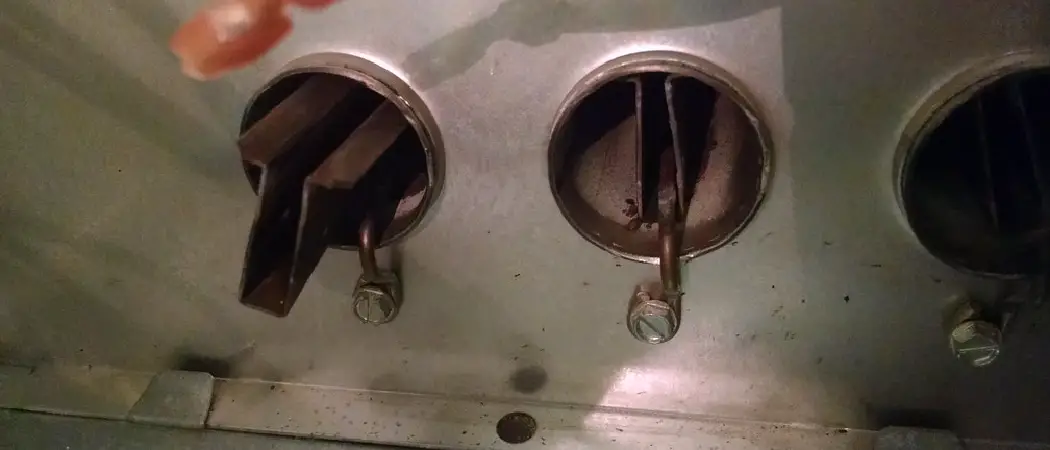Flame sensors are critical components in ensuring the safety and efficiency of heating systems. These sensors serve as a safety device, detecting whether a flame is present when the system is on and shutting down the fuel supply if a flame is not detected, to prevent gas leaks or potential explosions.
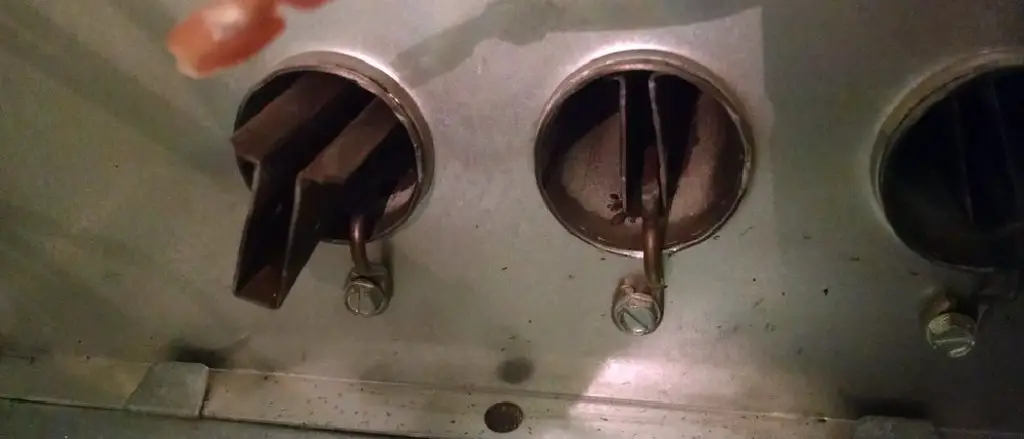
Knowing how to tell if flame sensor is bad is crucial for maintaining a safe home environment. A faulty flame sensor poses significant dangers—not only can it cause unreliable heating performance, but it can also lead to hazardous conditions that might put property and lives at risk. Early detection of sensor issues is essential for prompt repairs, preventing potential emergencies and costly damage.
This guide will cover various tell-tale signs and diagnostic methods for identifying a malfunctioning flame sensor and is intended for homeowners, HVAC professionals, and DIY enthusiasts looking to ensure their heating system operates safely and effectively.
Exploring Flame Sensors
What is a Flame Sensor?
A flame sensor is a safety device found in gas-fired heating systems, typically used to detect and confirm the presence of a flame before allowing fuel to flow through the system. It works by detecting an electrical current when a flame is present, signaling that it’s safe to continue fuel supply. If no flame is detected, the sensor sends a signal to the gas valve to shut off the fuel supply, preventing potential hazards.
Types of Flame Sensors
There are two main types of flame sensors commonly used in heating systems: optical and thermocouple.
- Optical Flame Sensor: This type of sensor uses infrared radiation to detect a flame. It has a small window that allows it to “see” if there is a flame present. If the sensor does not detect infrared radiation, it assumes that there is no flame and shuts off the fuel supply.
- Thermocouple Flame Sensor: This type of sensor uses a temperature difference between two dissimilar metals to produce a small electrical current when a flame is present. If no current is detected, the fuel supply will be shut off.
By understanding the flame sensors and the different types of flame sensors, you can better identify which type your heating system uses and how it functions, and this will help you to grasp the knowledge about how to tell if flame sensor is bad.
How to Tell if Flame Sensor Is Bad: Signs of a Bad Flame Sensor
Here are some common signs that may indicate a faulty or malfunctioning flame sensor:
Heating System Issues:
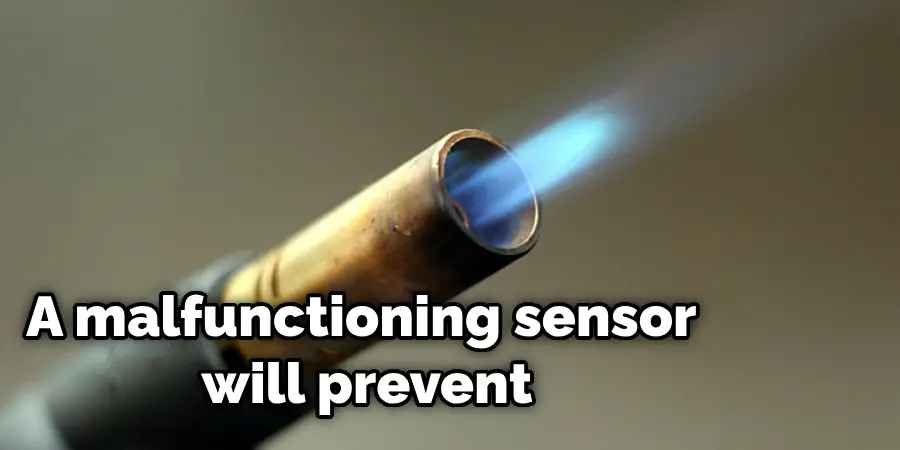
If your heating system is constantly turning on and off, or if it’s not producing enough heat, this may be a sign of a bad flame sensor. A malfunctioning sensor will prevent the fuel supply from flowing properly, leading to inconsistent heating performance.
High Gas Bills:
A faulty flame sensor can cause your heating system to consume more gas than necessary, resulting in unusually high gas bills. If you notice a significant increase in your monthly gas expenses, it’s worth checking the condition of your flame sensor.
Dirty or Corroded Sensor
A dirty or corroded flame sensor can also cause issues with its function. Over time, dust and debris can accumulate on the sensor’s surface, or corrosion may occur due to exposure to moisture. These build-ups can prevent the sensor from accurately detecting a flame, resulting in intermittent heating problems.
Frequent Shutdowns
If your heating system is constantly shutting down, it could be due to a malfunctioning flame sensor. The sensor’s primary function is to detect a flame and signal the gas valve to keep the fuel supply open. If it fails to do so, then the system will shut down as a safety precaution.
Error Codes
Some modern heating systems have built-in diagnostic features that can display error codes if there’s an issue with the flame sensor. If you notice any error codes on your system’s control panel, it’s likely related to a faulty or malfunctioning flame sensor.
These are a few common signs that will answer your queries about how to tell if flame sensor is bad, and if you notice any of these signs, it’s crucial to take prompt action.
How to Test if Flame Sensor Is Bad
If you suspect your flame sensor is bad, here are some steps you can take to confirm your suspicions:
Visual Inspection:
The first step is to visually inspect the flame sensor for any visible signs of damage, such as corrosion or carbon buildup. If you notice any physical damage, cleaning or replacing the sensor may solve the issue.
Check for Continuity:
With the power off, you can use a multimeter to check for continuity in the flame sensor’s electrical leads. If there is no continuity, it could indicate a faulty sensor.
Measure Sensor Output:
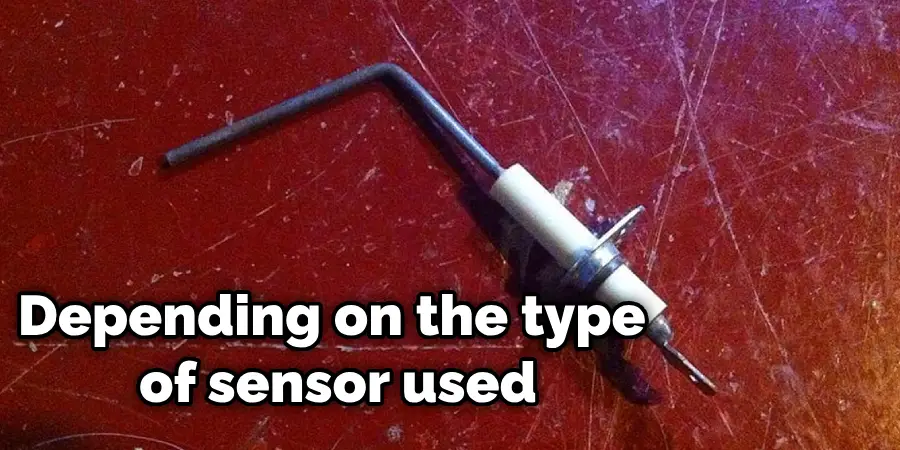
In some cases, you can measure the output voltage of your flame sensor using a voltmeter. A properly functioning sensor should produce around 1.4-4 microamps, depending on the type of sensor used.
It’s essential to note that testing and diagnosing a flame sensor requires technical knowledge and expertise. If you are not comfortable performing these tests, it’s best to leave it to a professional HVAC technician.
Troubleshooting a Bad Flame Sensor
If you’ve determined that your flame sensor is bad, here are some troubleshooting steps you can follow:
Clean the Sensor:
As mentioned earlier, a dirty or corroded sensor can cause issues with its function. Cleaning the sensor with a soft cloth and some rubbing alcohol may restore its proper function.
Replace the Sensor:
If cleaning the sensor does not solve the issue, it may be necessary to replace it entirely. Be sure to consult your heating system’s manual or contact a professional for guidance on finding a compatible replacement sensor.
Check other System Components:
Sometimes, a bad flame sensor may be a symptom of another underlying issue with your heating system. It’s essential to check other components, such as the gas valve and igniter, to ensure they are functioning correctly.
Call a Professional:
If you need more clarification or are uncomfortable with troubleshooting your heating system, it’s always best to call a professional HVAC technician. They have the knowledge and expertise to diagnose and repair any issues with your flame sensor properly.
Common Causes of a Bad Flame Sensor
A variety of factors can lead to a flame sensor malfunction. Understanding these factors can help prevent future issues and ensure that your heating system operates efficiently.
Normal Wear and Tear:
Like any mechanical component, flame sensors are subject to normal wear and tear over time. With constant exposure to heat and flame, the sensor can deteriorate, leading to a decline in performance.
Improper Installation:
Incorrect installation of a flame sensor can lead to several problems, including inadequate detection of the flame, which could cause the system to shut down prematurely.
Environmental Factors:
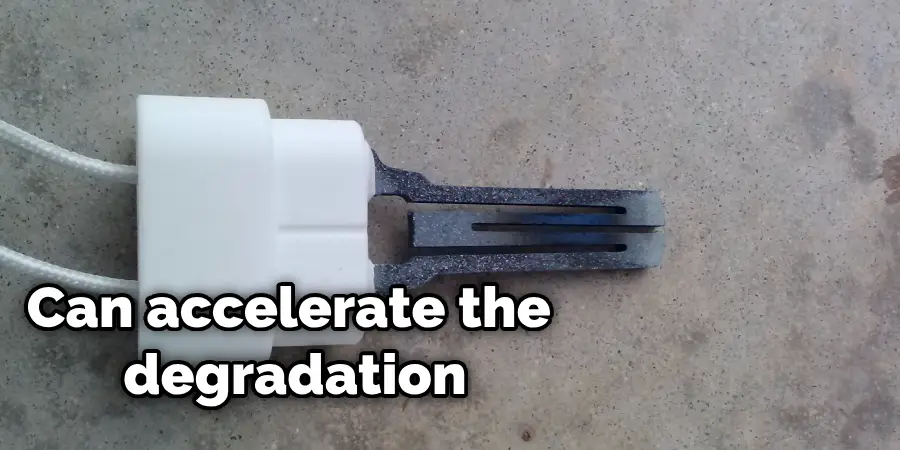
Exposure to extreme environmental conditions, such as high humidity or corrosive chemicals, can accelerate the degradation of a flame sensor, leading to earlier-than-expected failure.
Electrical Issues:
Faulty wiring or connections can disrupt the signal from the flame sensor to the control board, resulting in the heating system not operating correctly.
Infrequent Maintenance:
Regular maintenance is crucial for the longevity and reliability of a flame sensor. Neglecting maintenance can lead to a buildup of soot, dust, or rust, which can impair the sensor’s ability to function.
Preventing these common causes by ensuring proper installation, maintaining a regular maintenance schedule, and being aware of environmental factors can help prolong the lifespan of a flame sensor and minimize the likelihood of malfunctions.
Cleaning and Maintenance Tips for the Flame Sensor
To maintain the efficiency and prolong the lifespan of your flame sensor, here are some valuable cleaning and maintenance tips:
Regular Cleaning:
- Conduct regular cleanings of the flame sensor to prevent the accumulation of dirt and soot. Use fine emery cloth, steel wool, or a soft-bristled brush gently to remove dirt without damaging the sensor.
- After mechanical cleaning, carefully wipe the sensor with a clean cloth moistened with rubbing alcohol to remove any residue.
Routine Inspections:
- Schedule routine inspections of your HVAC system and include the flame sensor in these checks. Look for any signs of wear or damage that may indicate the need for replacement.
Calibration Checks:
- Periodically ensure that the flame sensor is calibrated correctly. Correct calibration can lead to correct readings and heating system inefficiencies.
Proper Installation:
- Verify that the flame sensor is correctly installed and that it is securely positioned in the flame path. Incorrect positioning can prevent the sensor from detecting the flame accurately.
Prevent Corrosion:
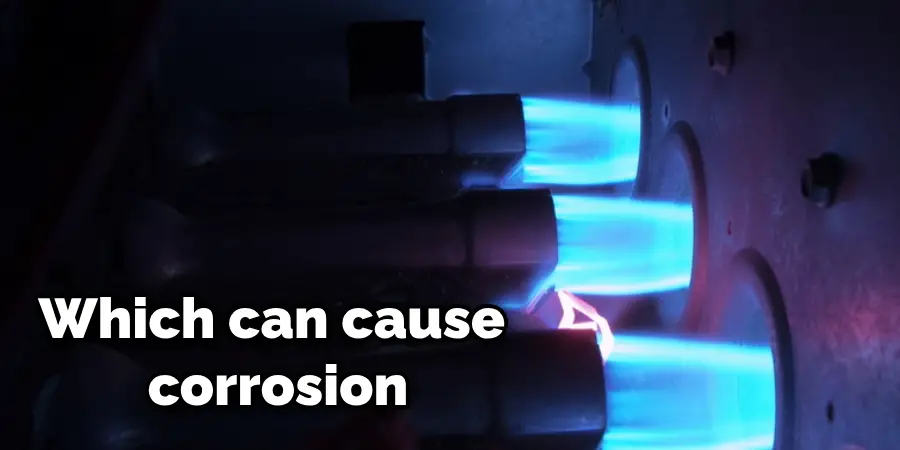
- Minimize exposure to moisture and chemicals, which can cause corrosion. If your sensor is in a humid environment, consider using a protective coating or sealant designed for high-temperature applications.
Avoid Overcleaning:
- Do not overclean the sensor, as aggressive cleaning can wear down the sensor surface and reduce its sensitivity. Clean only when necessary and follow the manufacturer’s guidance.
Professional Servicing:
- Include the flame sensor check as part of your annual professional servicing of the HVAC system. A certified technician can assess and perform any necessary adjustments or replacements to ensure optimal performance.
Implementing these maintenance practices will help to ensure that your flame sensor operates effectively for as long as possible, keeping your heating system safe and reliable.
Replacing the Flame Sensor
When to Replace
It is necessary to replace a flame sensor when consistent problems, such as frequent shutdowns, persist even after cleaning and other troubleshooting steps fail to resolve the issue. Ignoring a faulty sensor not only compromises your heating system’s efficiency but also poses significant safety risks, such as potential gas leaks or fire hazards, due to improper fuel regulation by a malfunctioning sensor.
Replacement Process
To ensure a safe and correct sensor replacement, follow this step-by-step guide:
- Consult the Manufacturer’s Manual: Obtain the correct sensor type and replacement procedure as specified by your heating system’s manufacturer.
- Power Off the System: Ensure that the power supply to the heating system is completely turned off.
- Remove the Old Sensor: Carefully disconnect and remove the faulty sensor from its mounting. Take a picture or note the positioning for accurate reinstallation.
- Install the New Sensor: Position the new sensor similarly to the old one, secure it appropriately, and reconnect any electrical leads.
- Power On and Test: After installation, turn the power back on and monitor the heating system for proper operation.
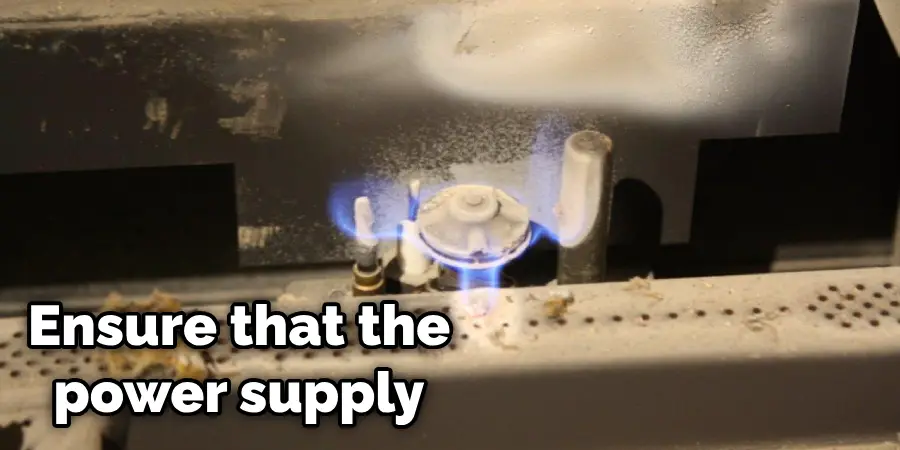
Incorporate images or diagrams of the sensor and its positioning for visual guidance. Always adhere strictly to the manufacturer’s instructions to avoid any discrepancies in installation.
Safety Precautions
Before replacing the flame sensor, it’s imperative to turn off the power to the heating system to prevent electrical shock. The importance of safety precautions cannot be overstated—improper replacement could result in damaging the new sensor, creating safety risks, and potentially voiding the warranty of the heating system. Following correct procedures ensures your heating system operates effectively and ensures your well-being.
Conclusion
The meticulous maintenance of a flame sensor is critical for the seamless operation of your HVAC system. Being aware of how to tell if flame sensor is bad, and addressing it promptly not only ensures the longevity of your heating system but also safeguards against potential safety hazards. As a homeowner or facility manager, adopting a proactive approach can make a significant difference in operational efficiency and safety. Regularly check for signs of a malfunctioning sensor, such as an unreliable flame detection or an unexpected system shutdown, and remember that preemptive care is always better than reactive repairs.
We encourage all readers to prioritize the health and personal safety of their HVAC systems. If you suspect your flame sensor may be failing, do not hesitate to consult with a professional for an expert assessment. Don’t take risks with your comfort and safety—be proactive and address flame sensor issues as soon as they arise.
Share this blog post with others to spread the word on the importance of flame sensor maintenance, and if you have concerns about your system, reach out to a certified technician today. Stay informed, stay safe, and always stay ahead of HVAC maintenance.

